
by NewsAdmin | Jul 28, 2023 | Jendamark Junction
Educational technology, or ed-tech, is not a new concept, but the radical infrastructural approach that ODIN Education has developed is successfully bridging the digital divide in classrooms across India and South Africa.
Right now, there is a huge opportunity to transform education in developing countries, the head of ODIN Education, Ajit Gopalakrishnan, believes.
“The need for change in education isn’t new. Ed-tech itself isn’t new – some companies have been doing it for close to 20 years,” says Gopalakrishnan.
“But there are significant infrastructural challenges in developing countries that widen the digital divide. At ODIN Education, we believe we can fill in the gaps in accessibility to education and technology. Our aim is to be a complete infrastructure solution, and to develop a way for ed-tech to be implemented at scale.”
Full stack solution
Gopalakrishnan describes ODIN Education as a “full stack” solution.
“We put the entire infrastructure in place – everything from hardware to software, and we also provide support for what we call warmware – the students and teachers themselves.”
ODIN Education deploys ed-tech devices, personalised for every learner and pre-loaded with educational resources, which are all connected to the cloud server.
“It’s a safe, managed solution. Our system is closed, and the children can access only what we open to them,” he says, adding that analytics currently show substantial engagement – an average of 51 minutes per learner per day.
Where there are larger constraints such as poor connectivity in far-flung rural areas, the system provides a mix of online and offline resources.
Holistic education
“We don’t believe that fully online learning and teaching is the solution, but at the same time, traditional ways of teaching are outdated. So, our approach is a hybrid one, deploying tech into schools to sustainably augment the learning process.”
Essentially, Gopalakrishnan says, there are two problems to solve: access to resources and the education system itself.
“We cannot treat every child the same. We need a dynamic, personalised curriculum that understands the child and the environment they are in.
“I don’t believe we have a shortage of talent or passion. What we are creating is the infrastructure to find the talent and nurture it.
“The integration of AI helps us figure out what a particular child is good at and interested in, and then to connect that child to the resources they need to develop their talent. We can be pioneers in a new way of educating.”
ODIN Education is currently being rolled out with the support of private companies who have the vision to invest responsibly and sustainably in the future.
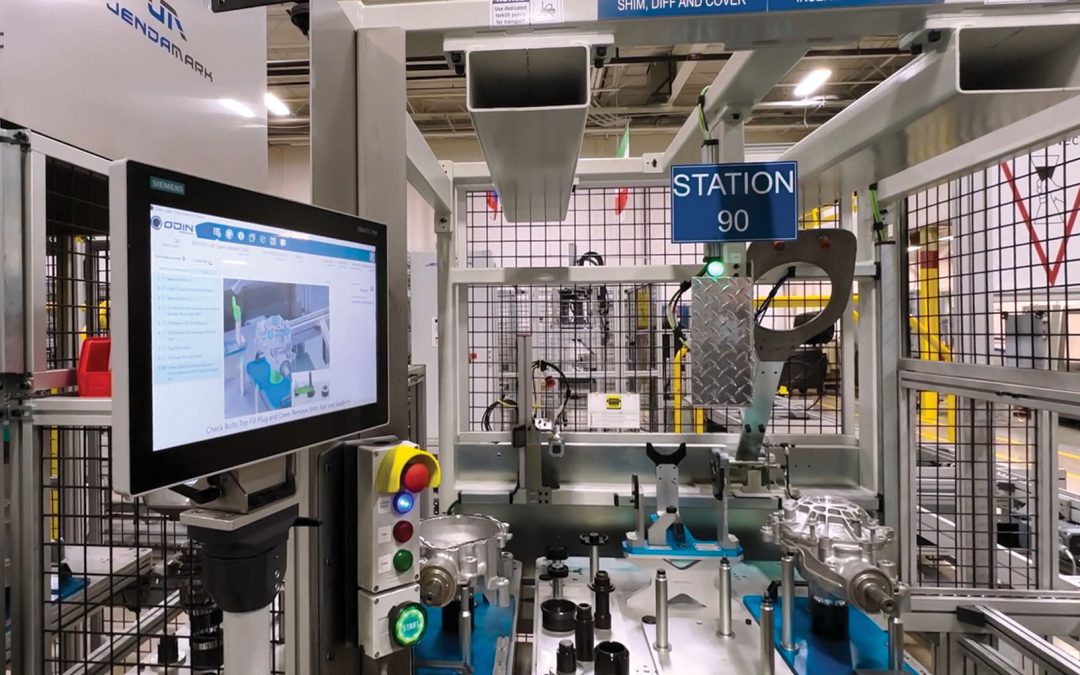
by NewsAdmin | Jul 26, 2023 | Jendamark Junction
The introduction of ODIN Workstation on a new differential assembly line for our customer, ZF, at their plant in Gainesville, USA, has made a big difference to the operators on the shop floor.
According to ZF’s senior production support specialist, David Pirkle, the human-centric approach is not only helping operators to do their jobs better but is also helping the plant to achieve its overall key performance indicators.
“We concentrate on four Lean manufacturing principles: We want a safe plant that doesn’t put the customer at risk, that makes good quality products, and we want to be able to do this at a good cost, and in time. If we achieve those four KPIs at a high level, then we’ll have customer satisfaction.”
Pirkle says taking a human-centric approach by first supporting operators is essential to achieving this success.
“If we continue to make their job easier, we’ll get the KPIs we want.”
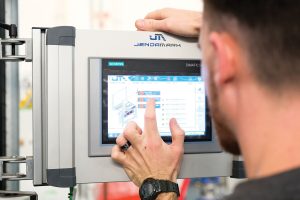 Paperless work instructions
Paperless work instructions
While some were initially resistant to the switch from paper-based work instructions to a step-by-step digital process, Pirkle says even the longest serving operators have seen the difference it has made, since they no longer have to memorise the steps.
“One operator, he’s a little old-school, came back and said this was actually easier than paper. So I was happy to hear that because I really value him – he’s been with ZF for 35 years.”
Pirkle said ODIN Workstation provided practical support for operators, helping them follow a set sequence to build quality products in a safe way, within cycle times.
“ODIN is right in front of them, showing them what to do. The operators can basically build and look at the same time.
“It also allows you to train less, because the work instructions are in front of you, they’re easy to read and simple to understand. If something doesn’t go right, ODIN tells you what you’ve missed. It won’t allow you to move to the next step unless you do the previous one.”
Aside from work instructions, ODIN Workstation secures the process via validation of parts and sub components. Traceability of every step allows visibility into process, product and machine trends generated from automated, semi-automated and manual operations.
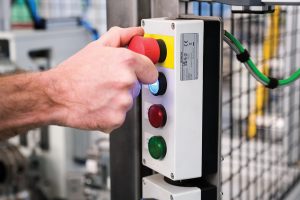 TPM and 5S checks
TPM and 5S checks
ZF also worked with Jendamark to develop a new system within ODIN for ensuring that operators complete their required Total Productive Management (TPM) and 5S System checks, to ensure that their space is clean and organised so work can be performed efficiently, effectively and safely.
“The operator comes in in the morning, and they’ll do their quick 5S checks. Then they click ‘Yes’ to accept responsibility for the state of their work area and start their shift. This drives accountability, and we’ve seen a really good response,” explains Pirkle.
“The supervisor loves it because he doesn’t have to walk around the line and he doesn’t have to check the boards; the information comes to him. Because a lot of the data is in ODIN, which can produce graphs and charts for reporting, supervisors can actually supervise again and not be so tied down with admin.”
Given the benefits that the Gainesville plant has seen, ODIN Workstation will also be adopted at its sister facility in Marysville.
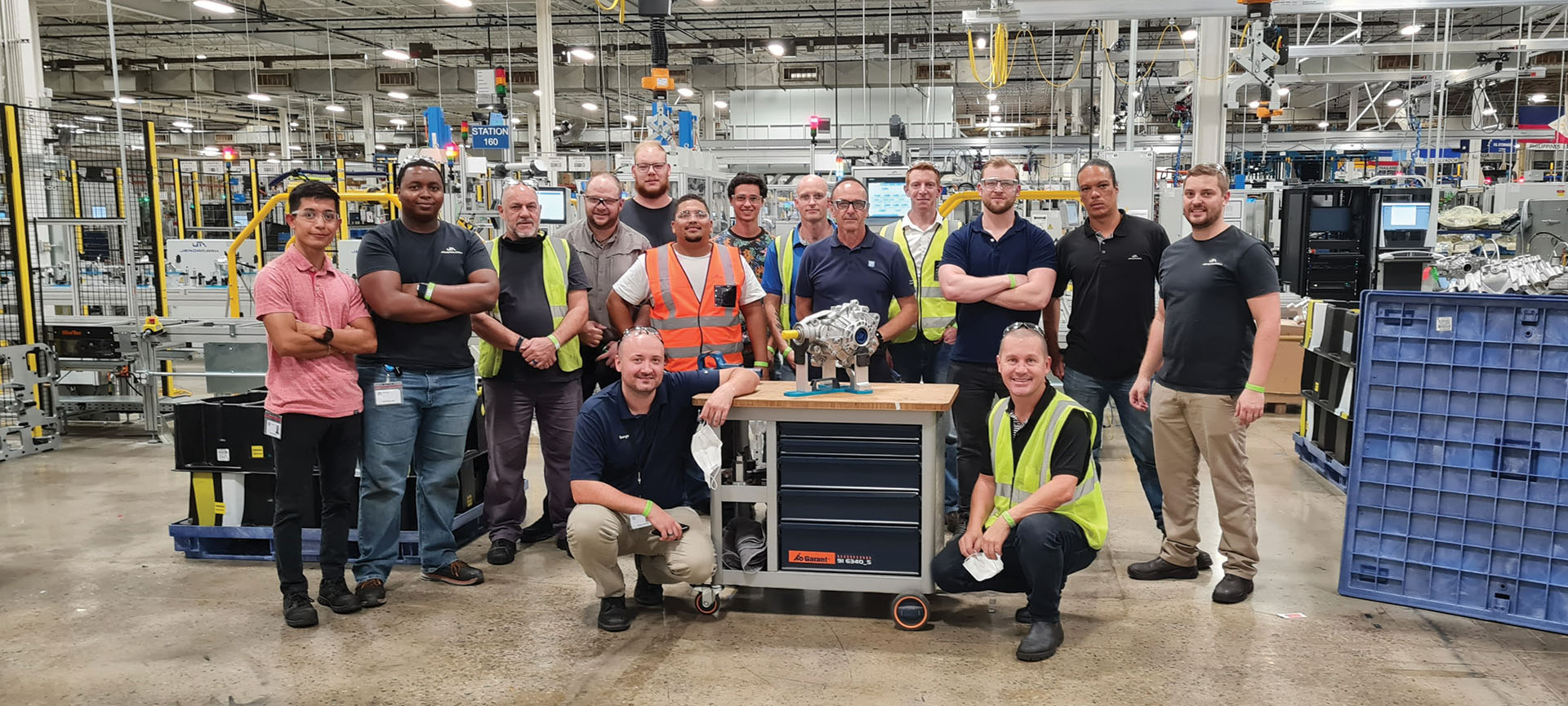
GLOBAL TEAMWORK
This assembly line was an example of Jendamark’s global teamwork – designed, built and installed by our South African team, with the high quantity workpiece carrier units manufactured in India.
It was also installed in record time – 7.5 weeks from the time the first box arrived until the last button was pushed and final sign-off achieved.
Project manager David Boshoff says the recipe for success was testing and more testing. “Through proper strain testing at our home premises, we could de-bug the line and avoid a costly, extended installation.
“This was our first time using VMT to scan and evaluate the sealant bead. Getting the spintop working on site brought many unknowns and was challenging, but the team dug in and resolved all issues.”
Boshoff says pandemic-related visa restrictions meant that all installation team members had to climb in to make it happen. “We had controls guys wiring panels, mechanical building parts and electrical helping with line layouts.”
A further headache was the delayed arrival of a third-party supplier’s robots.
“It was a challenge placing the conveyor in the exact location, within 10mm, to ensure that they could reach pick-up and drop-off. We had to measure and re-measure many times before placing the conveyor and then all the facilities. Moving the entire line again was out the question.”
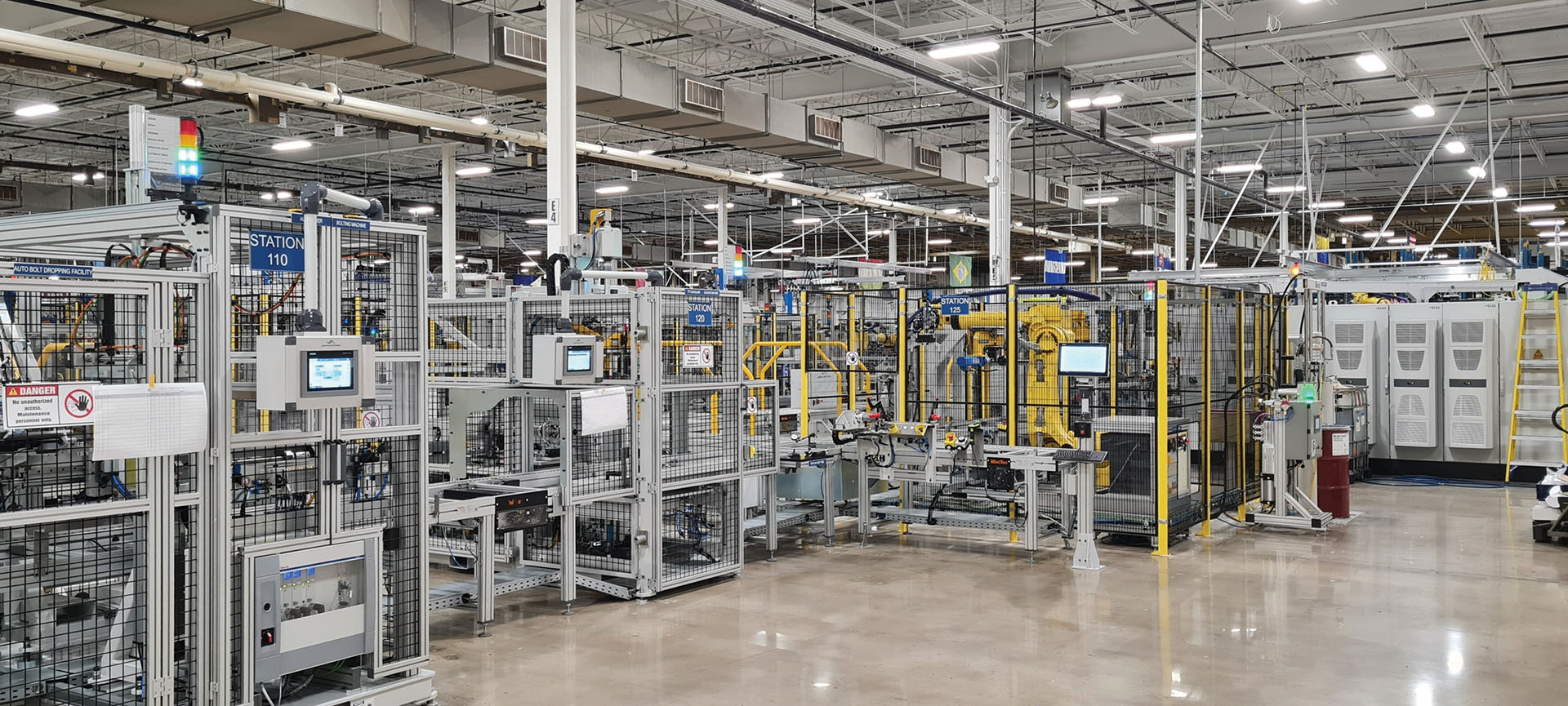
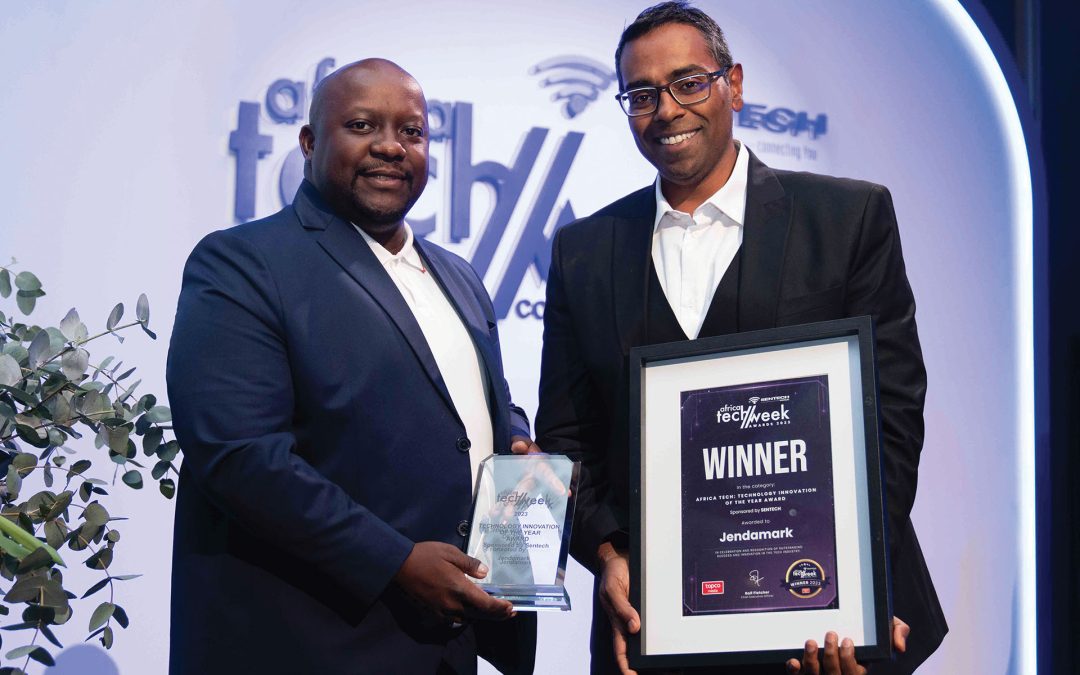
by NewsAdmin | Jul 25, 2023 | Jendamark Junction
Jendamark’s manufacturing technologies have been independently recognised for a second consecutive year by the prestigious Africa Tech Week Awards in Cape Town.
At the ceremony in May, Jendamark won the Technology Innovation of the Year category for our ODIN Manufacturing software, making it two in a row after being named Technology Company of the Year for 2022.
Innovations director Yanesh Naidoo says the award, judged by an independent panel, serves as a confirmation that the manufacturing technology developed by Jendamark is meeting a real need for small to medium enterprises.
“For us, it’s not about developing technology for technology’s sake, but about understanding the customer’s challenges, and creating digital solutions to solve those challenges.
“Last year, the award was about our company; this time it’s for our products. So, it’s a massive win for us,” says Naidoo.
For developing countries such as South Africa and India to prosper, he says, there is a need to focus on building a strong manufacturing-based economy.
“That’s why we developed ODIN Manufacturing – to help digitise and improve production efficiencies, and create opportunities for the massive human capital that we have.
“Our solutions take a human-centric approach to Industry 4.0, meaning they don’t take people off production lines but rather use tech to support people to do their jobs more accurately and efficiently.”
Jendamark’s ODIN Education division, which creates the tech infrastructure to bridge the digital divide in underprivileged schools, was also named a finalist in the ed-tech category.
“Although they may seem unconnected, we created ODIN Education to help transform the education sector, so that the next generation can be equipped and ready to take on this manufacturing challenge amid the rapidly accelerating pace of Industry 4.0 technologies,” says Naidoo.
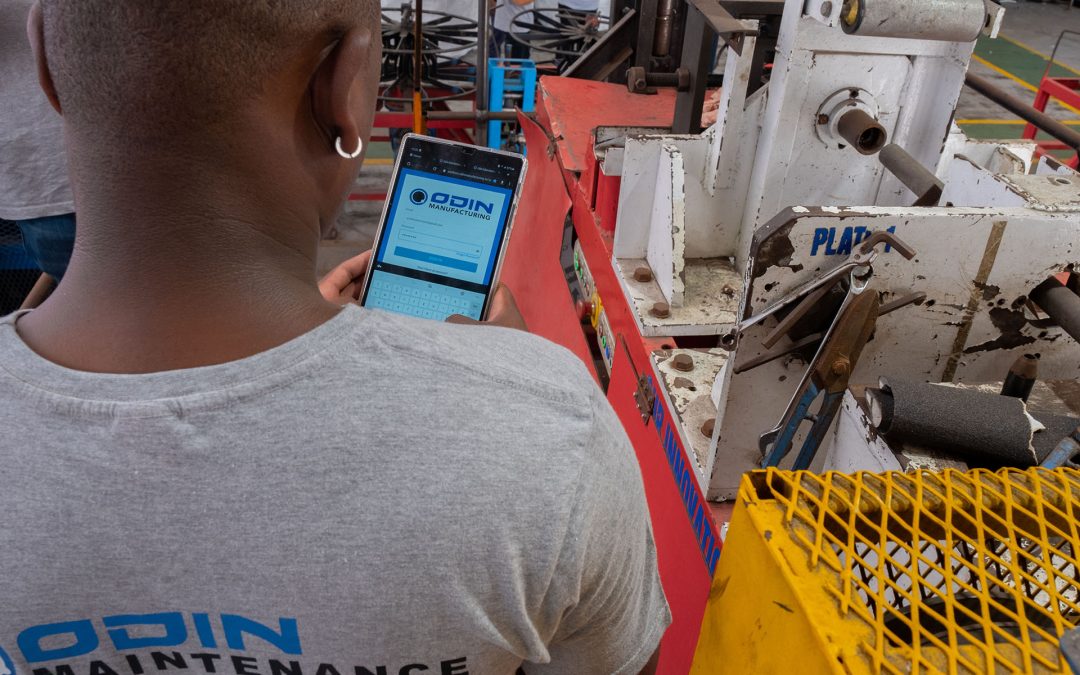
by NewsAdmin | Jul 24, 2023 | Jendamark Junction
Jendamark’s ODIN Manufacturing is designed to provide digital solutions to real-world problems on our customers’ factory floors. To make the ecosystem more accessible and easier to implement for customers, the offering has been restructured into two distinct clusters of support.
Head of ODIN Manufacturing Juane Schutte says the solutions can be broken down into those that support complex, discrete manufacturing processes and those that support critical maintenance and shopfloor tasks.
“We’ve identified these two distinct problem areas where our customers need support,” explains Schutte.
“If you need support for your production process, we recommend the base product, ODIN Workstation, and if you are looking to digitise your maintenance function, then we start you off with ODIN Checkpoint.”
Depending on the customer’s unique situation, Schutte says, a combination of various add-on products can be incorporated to provide a tailored solution. Below is an overview of how ODIN Manufacturing can solve common production or maintenance challenges.
PRODUCTION SUPPORT

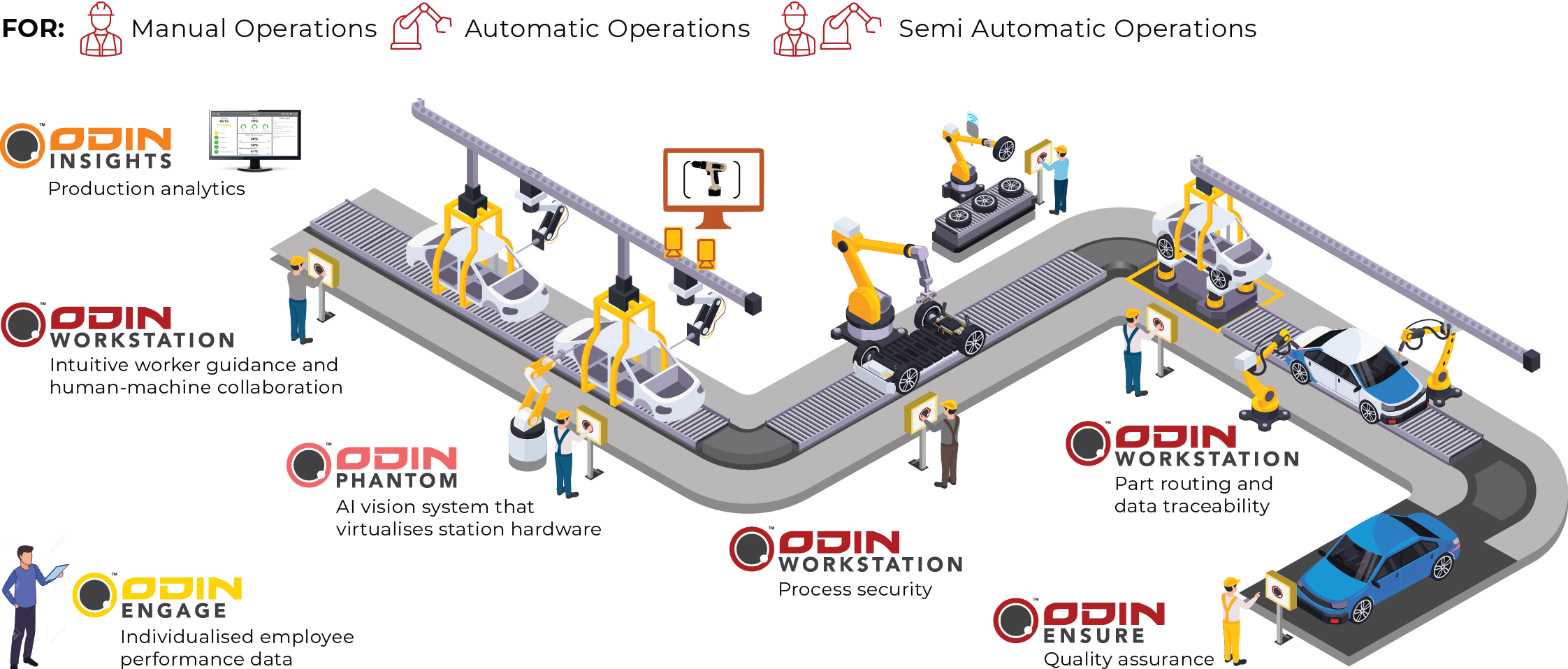
When it comes to production processes, the base product is ODIN Workstation – a digital infrastructure solution that increases efficiencies on your production line. Its core features are enhanced operator guidance, quality assurance, direct device integration and production planning.
As a standalone product, ODIN Workstation provides a multitude of capabilities and features, while its add-on solutions unlock further potential.
For example, if you are struggling with defective parts due to incorrect orientation during assembly, the ODIN Phantom AI vision system could assist with process tracking, while ODIN Ensure digitises your end-of-line checklist to improve traceability and process security for your quality assurance process.
ODIN Engage tracks the performance of individual operators, so that you can support them by identifying areas for improvement and training, while ODIN Insights provides comprehensive production-level reporting to accelerate root cause analysis when there are problems and to minimise downtime.
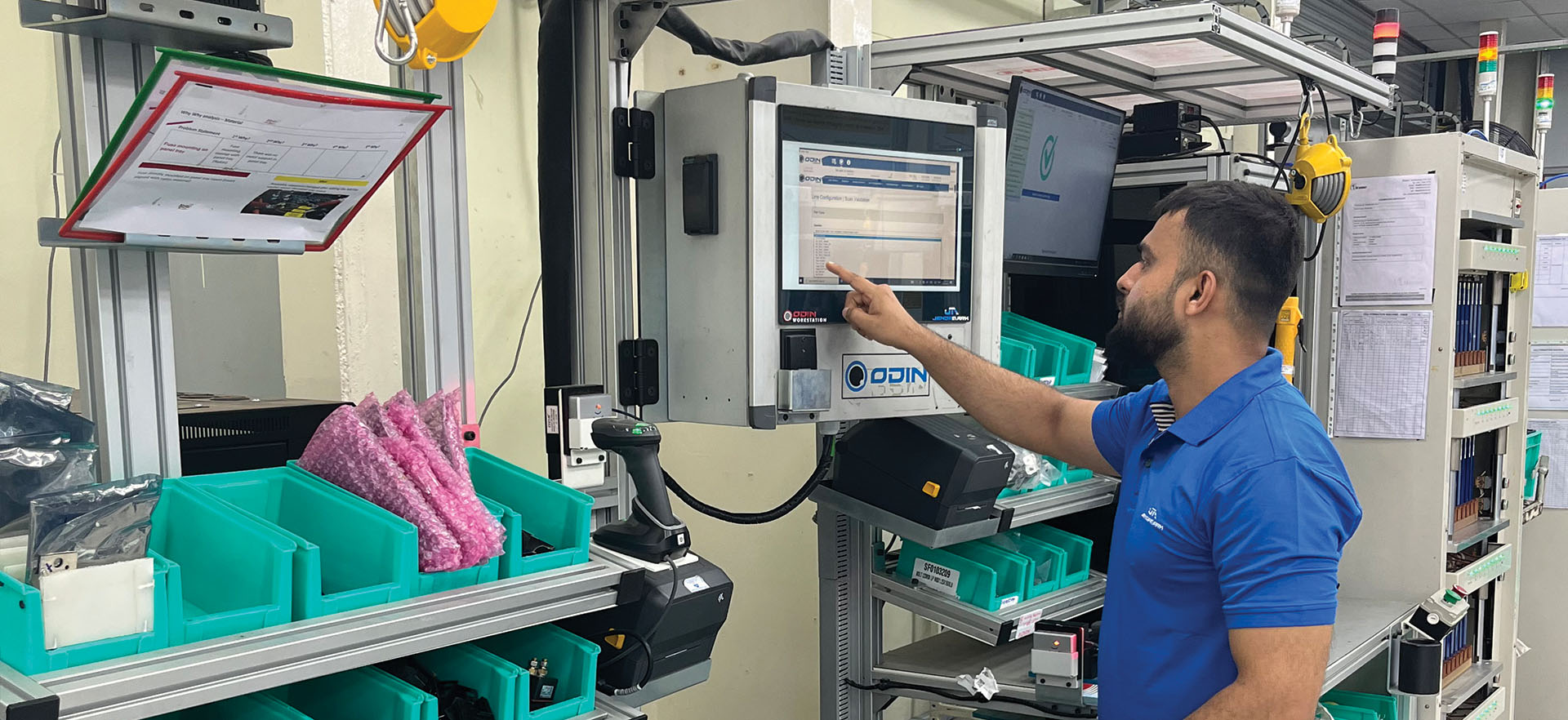
MAINTENANCE SUPPORT

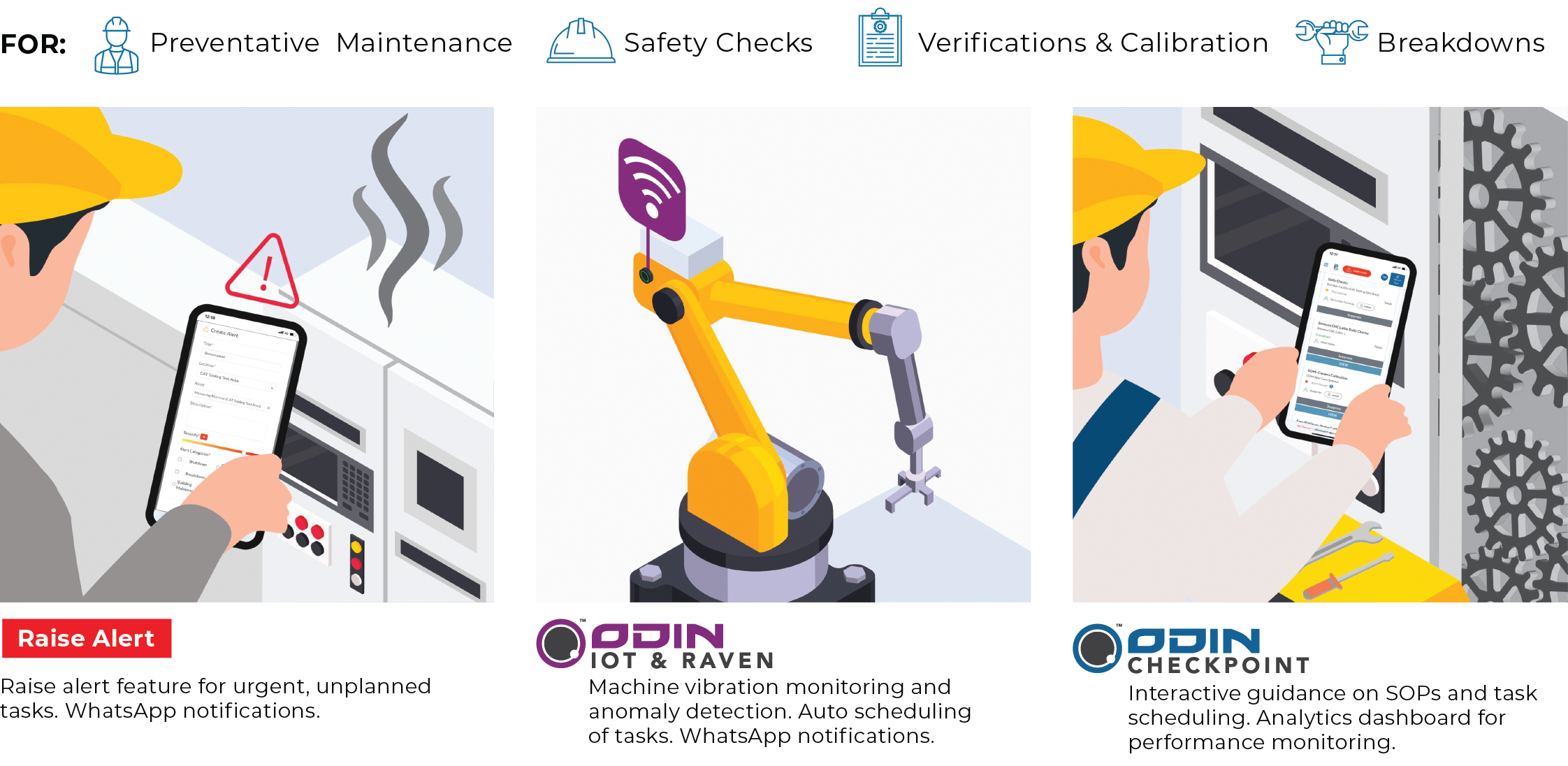
As the stand-alone base product to improve the support processes around your factory, ODIN Checkpoint is a user-friendly, cloud-based solution for preventative and predictive maintenance. Set, track and control all your maintenance and service tasks to prolong the lifespan of your assets.
You can assign and schedule planned maintenance activities without reams of paperwork. If your senior technicians are not available, digitised work instructions can help junior members carry out more complex service tasks.
When it comes to urgent, unplanned breakdowns, the Raise Alert system can be used to notify relevant team members of the problem and assign someone to take action. ODIN Checkpoint helps your technicians become accountable for performing planned maintenance tasks effectively and in time and for managing unplanned incidents. Detailed reporting and analytics gives managers a clear picture of both the technicians’ performance and the health of all assets in your factory.
The addition of the ODIN Raven sensor, which works with our ODIN IOT software, turns machine vibration data into useful information that allows your team to detect anomalies and take pre-emptive action.
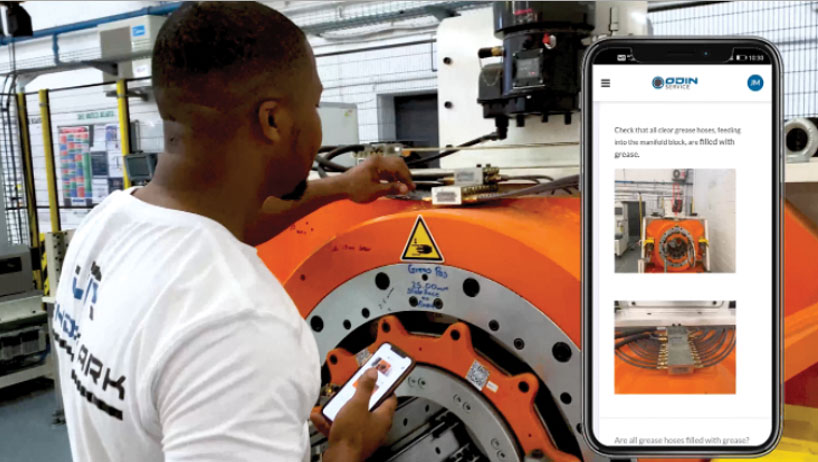
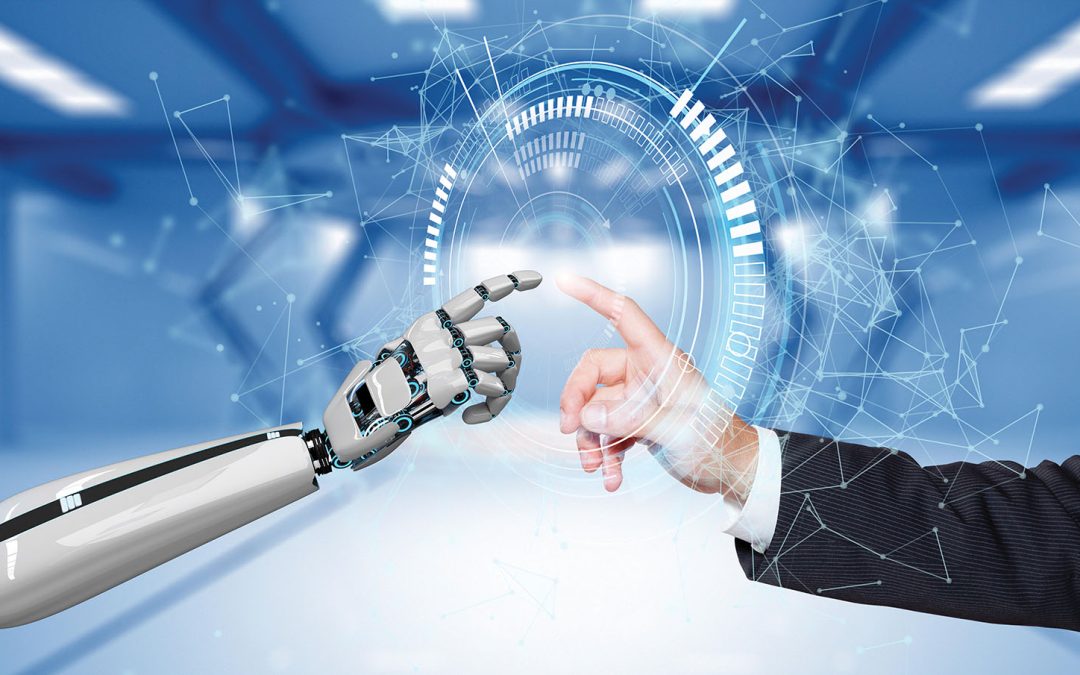
by NewsAdmin | Jul 21, 2023 | Jendamark Junction
While many equate Industry 4.0 with robotics and full automation, Jendamark’s human-centric approach puts people at the beating heart of the manufacturing process. Humans will always have an important contribution to make – despite the rise of artificial intelligence (AI).
When it comes to a realistic assessment of the role that humans play, one must first acknowledge that humans have been, and will continue to be, an integral part of manufacturing, argues Jendamark India director Himanshu Jadhav.
“Throughout history, humans have solved problems and created technologies to make life easier – to meet a need. Even with the smartest manufacturing facilities, it is the humans in that environment that make it a success,” says Jadhav.
“This is especially true when it comes to complex, qualitative scenarios,
which require all facets of human intelligence to resolve.”
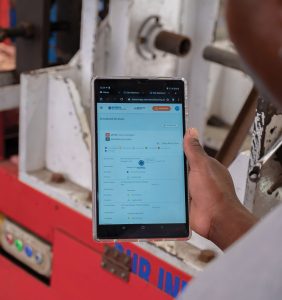 Emotional advantage
Emotional advantage
On the one hand, machines, unlike people, do not get emotional, and their output is not dependent on how they were feeling at the start of the working day, he says.
“Like their human co-workers, machines with AI can now identify production problems and stop the process until the problem is rectified,” concedes Jadhav.
But, he says, arriving at the solution to that problem involves choosing the best method with the least impact, identifying the priority actions, and possibly weighing up several variables. These are complex scenarios that require creativity, emotion and sound judgement. Many situations can’t be solved by an algorithim.
“We rarely see EMOTION as an admirable human quality. But, in manufacturing, it is often the difference between doing something wrong and creating a viable alternative solution.”
Emotion, it seems, is the human motivator for problem solving. We engage in out-of-the-box critical thinking and do “impossible” things because of emotional drivers, such as passion and curiosity.
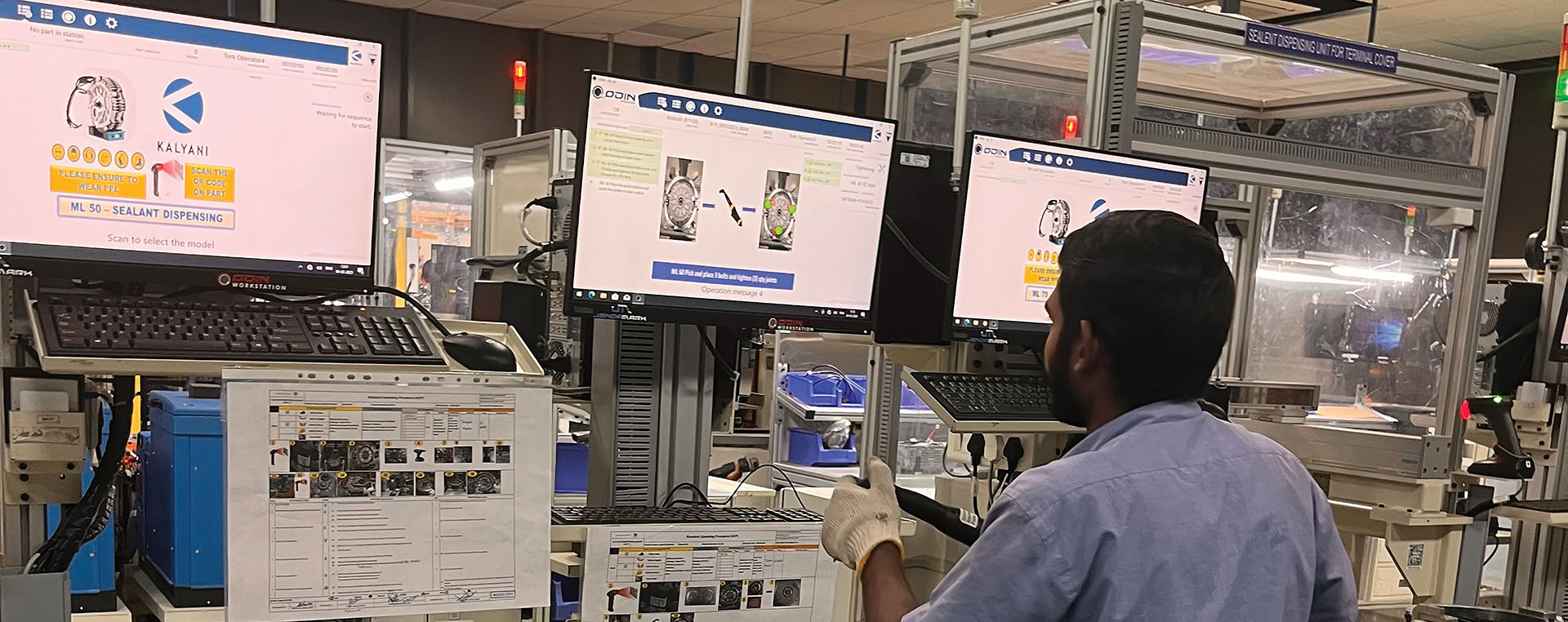
Economic contributors
With the populations of developed economies declining, and the number of skilled workers in the manufacturing sector declining with them, autonomous production processes fill a real need by doing more with fewer human resources, explains Jadhav.
“Having said that, it takes a highly skilled human to develop, operate and maintain an automated machine. While humans are less involved, they still have a critical role to play as the process demands a more advanced skill set.”
Technology is getting smarter every day, so keeping up with and implementing it is the main role of humans in so-called first world countries.
In developing economies, which tend to have much larger, less skilled populations, Jadhav says less automation along with more employment and job creation are critical to improving socio-economic conditions and general living standards.
“Here, humans must be more involved in manufacturing, being in control of mostly manual production processes, to facilitate overall economic advancement.”
As production systems evolve, he says, people and technology are being integrated more closely and intensively than ever before.
“It’s essential that we fully understand how to best design and operationalise both human and technological functions.”
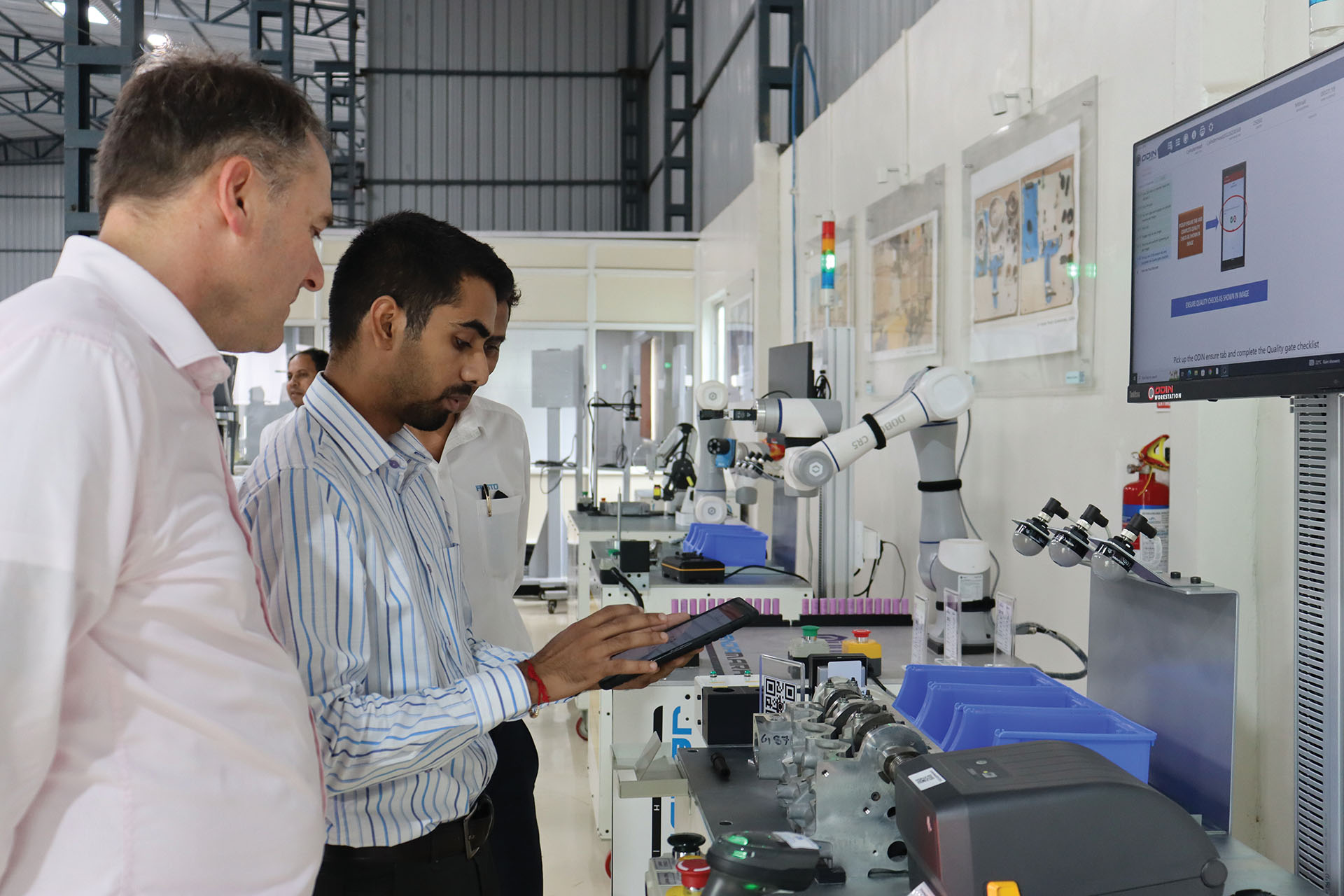
Why Jendamark’s human-centric approach works
Let’s review the numbers
3: The decades of machine-building experience that Jendamark has
3000+: The number of assembly facilities built
95%: The average efficiency rate of our machines over a period of time
75%: The average efficiency rate of human operators over that same period
Production output = human efficiency rate x machine efficiency rate
Improving overall efficiency
For machine builders such as Jendamark, it is relatively easy to improve machine efficiency using smart technology. But this will not significantly improve production output if the human efficiency remains low.
That’s why ODIN Manufacturing solutions focus on supporting humans through worker guidance and process security solutions to eliminate errors and improve the overall quality and quantity of the end product.
We understand that literacy levels, skill sets and expertise vary, so our software solutions make it extremely easy for even novice operators to complete assembly tasks with fewer errors and highest efficiency.
Process security
By connecting field devices like cameras, sensors and machines, we create an ecosystem that ensures that none of the assembly process steps can be skipped. These process security checks also apply where collaborative robots are employed in conjunction with ODIN Manufacturing. Where the robot is assigned to a particular station, the camera will check the process security measures, which are recorded in the ODIN system.
Must-have solutions
By implementing these two core solutions, customers can improve not only production efficiencies but also the efficiency of the plant.
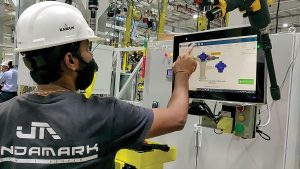 ODIN Workstation:
ODIN Workstation:
Ensures that even a new operator is able to do an assembly task with minimal or no training. Unless every process step is correct, the part does not leave the station.
ODIN Checkpoint:
Ensures that the machines are well looked after. This is a cloud-based maintenance solution for scheduling tasks and guiding inexperienced technicians to perform complex maintenance tasks.


 Paperless work instructions
Paperless work instructions TPM and 5S checks
TPM and 5S checks





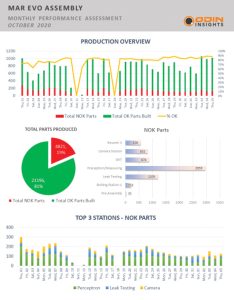
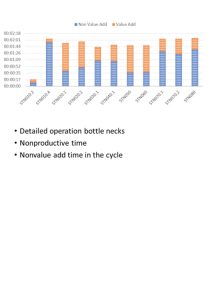





 Emotional advantage
Emotional advantage

 ODIN Workstation:
ODIN Workstation: